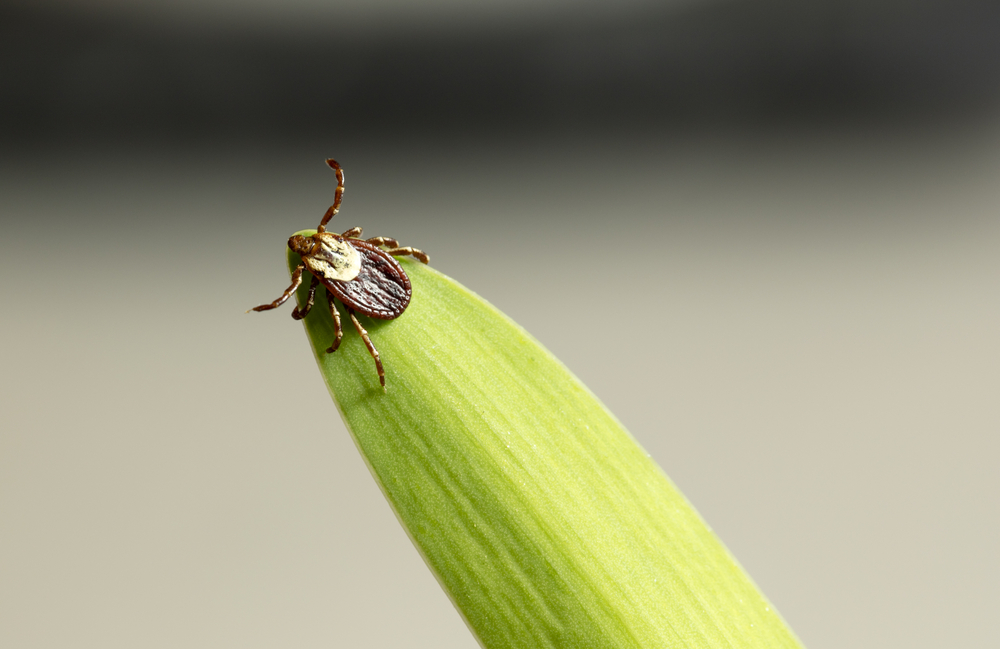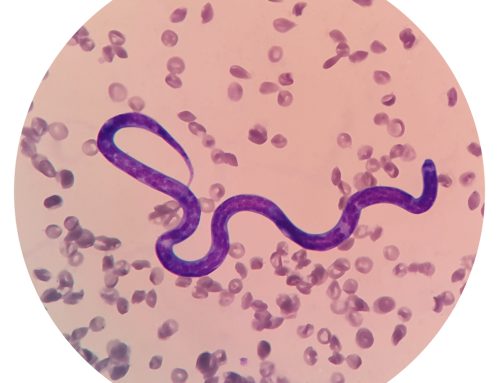With warmer weather approaching, you’ll want to spend more time enjoying the sunshine outdoors with your furry pal—as will a multitude of parasites. Fleas, ticks, and mosquitoes also savor warm temperatures and become more active looking for their next meal, which could easily be your pet. Without proper protection, your pet could develop heartworm disease, Lyme disease, anaplasmosis, or ehrlichiosis, which are some of the most common parasitic diseases in pets. As spring and summer bring out increased parasite populations, brush up on your knowledge on how to battle these blood-sucking pests.
#1: Heartworm disease in pets
Transmitted by mosquitoes, heartworm disease is a potentially fatal illness that primarily affects dogs, but can also develop in cats. Dogs and wild canines are the preferred heartworm hosts, but cats—and all mammals—can suffer from this mosquito-borne illness.
- Signs — Signs of heartworm disease differ in dogs and cats. In dogs, signs include a progressive dry, hacking cough, exercise intolerance, fatigue, and inappetence. In later disease stages, dogs can develop a fluid-filled abdomen as the result of heart failure. These signs can take months to years to develop while the heartworms reach adulthood inside the dog. In cats, signs can appear much earlier and are more varied. Since cats are not preferred hosts, their immune system attacks the immature heartworms, creating an inflammatory response. Cats can suffer from asthma-like signs, including wheezing, coughing, and difficulty breathing, but can also display vomiting, diarrhea, difficulty walking, and seizures. In rare cases, sudden death is possible.
- Treatment — Again, heartworm disease is treated differently in cats and dogs. For cats, no treatment exists, and supportive care is the only available option. Dogs can receive a series of arsenic-based injections deep into the lumbar muscles, which are typically spaced a month apart. During this time, and for at least one month after the final treatment, the dog must be kept to minimal activity to prevent issues caused by the dying worms.
- Prevention — Heartworm disease prevention is simple. Oral, topical, and injectable preventives are available to protect your pet from heartworms, and often provide additional parasite protection against intestinal parasites, fleas, and ticks.
#2: Lyme disease in pets
One of the most common tick-borne illnesses, Lyme disease can affect pets and people. Transmitted by the black-legged, or deer, tick, Lyme disease is prevalent across the country. In general, ticks must remain attached to your pet for about 48 hours to transmit the Lyme bacterium, so prompt removal and quality tick prevention is crucial to thwart disease.
- Signs — Lyme disease does not cause the classic bullseye rash in pets that it does in people. Instead, you’re more likely to notice shifting-leg lameness, fever, inappetence, lethargy, and swollen lymph nodes. Lyme disease has the unique feature of waxing and waning over the course of your pet’s life, and they may experience flare-ups, including after initial treatment. However, many pets show no disease signs, and the Lyme bacterium’s presence is detected only on routine screening tests.
- Treatment — Treatment depends on the appearance of clinical signs, and whether the urine contains excess protein, two major indicators that the infection warrants antibiotics. To ease the discomfort from lameness, nonsteroidal anti-inflammatories can be administered, although the pain usually dissipates soon after an antibiotics course. In most cases, a 21-day course of antibiotics is necessary.
- Prevention — Tick prevention and heartworm prevention come in similar forms, but with no injectable option. Instead, one-month and three-month chewable tablets and topical applications are available, making tick protection simple to administer. A vaccination is also available to help protect your dog from developing Lyme disease.
#3: Anaplasmosis in pets
Anaplasmosis is another tick-borne illness that comes in two forms—one that infects the white blood cells, and another that infects a dog’s platelets. These two anaplasmosis types are transmitted by the brown dog and the black-legged ticks, which can also transmit other diseases.
- Signs — Signs differ based on the bacterium transmitted. The anaplasmosis type that infects white blood cells generally causes vague signs, such as lameness, joint pain, lethargy, inappetence, and fever. The type that attacks platelets can lead to clotting issues, evidenced by abnormal bleeding and bruising.
- Treatment — A 30-day antibiotics course typically clears an anaplasmosis infection, providing an excellent prognosis.
- Prevention — Year-round tick prevention is critical for protecting your pet against the two ticks known to carry Anaplasma bacteria.
#4: Ehrlichiosis in pets

Similar to anaplasmosis, two ehrlichiosis forms can occur in your pet—monocytic and granulocytic. Brown dog and lone star ticks are primarily responsible for Ehrlichia infections, and can also transmit other tick-borne illnesses.
- Signs — Both ehrlichiosis types can cause fever, lethargy, inappetence, and neurologic abnormalities. The monocytic form can also lead to abnormal bruising and bleeding, chronic eye inflammation, and lymph node enlargement, whereas the granulocytic form can cause lameness, vomiting, and diarrhea.
- Treatment — Like other tick-borne illnesses, a lengthy antibiotics course clears an Ehrlichia infection, although improvement is usually seen in a few days.
- Prevention — Quality tick prevention can keep your pet safe from both types of ehrlichiosis, along with other tick-borne illnesses.









Leave A Comment